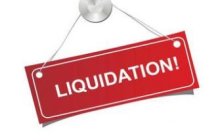How to liquidate a company

There are a multitude of reasons why you would want to liquidate your company or would need to, so knowing the right steps to follow in advance can help make the process of liquidation smooth and painless.
This guide deals with how to liquidate a company if you are choosing to do a voluntary liquidation, that is the directors and shareholders have initiated the liquidation. If you are undergoing a compulsory liquidation then you should consult an insolvency practitioner at the earliest opportunity.
The first step in how to liquidate a company is to evaluate if you are currently solvent, i.e. if you are able to fully service all of your outstanding debts and liabilities. If you are solvent then you will be performing a members voluntary liquidation, and if not you will be performing a creditors voluntary liquidation. The legal steps you need to follow differ slightly in each instance.
A members voluntary liquidation can be called if you no longer wish to run the business even though it is still solvent, and you do not wish to sell the business as a going concern. You do not need to contact an insolvency practitioner to act as your liquidator until quite late in the process, however you may wish to involve them at an earlier stage to assist you in a smooth liquidation.
The first step is to download a declaration of solvency (form 4.70) which needs to be signed by the majority of directors. Once this is in place then a general meeting with shareholders must be called with at least 5 weeks notice, and a resolution for voluntary winding up passed. You must then advertise the resolution in The Gazette within 14 days. At this point you must appoint an insolvency practitioner as liquidator who will take charge of winding up the company. You must then submit your signed form to Companies House within 15 days of the resolution.
The process of how to liquidate a company for a creditors voluntary resolution is similar, however it starts at the general meeting with shareholders. 75% of shareholders by shares held must agree to winding up resolution. Once the resolution is passed you must appoint an insolvency practitioner to act as liquidator, advertise the resolution in The Gazette and send the resolution to Companies House within 15 days. You must also arrange a meeting of all creditors with 14 days of the resolution, giving at least 7 days notice and advertising the meeting in The Gazette. At this meeting you will need to present a statement of affairs using form 4.19, and must be accompanied by either another director, the company secretary or the liquidator. The creditors will have the opportunity to ask questions about the company’s failure, and may suggest alternative liquidators to handle the winding down of the company.
It is important to note that the key difference between the two forms of liquidation is who the liquidator is acting in the interests of. In the case of a members voluntary liquidation he acts in the best interests of the shareholders, while in a creditors voluntary liquidation he acts in the best interests of the creditors as a whole, and will be responsible for organising the priority of payment for multiple creditors.
Every month Business Recovery help businesses improve their cash flow. Request a quote to find out how much extra cash you could raise.

